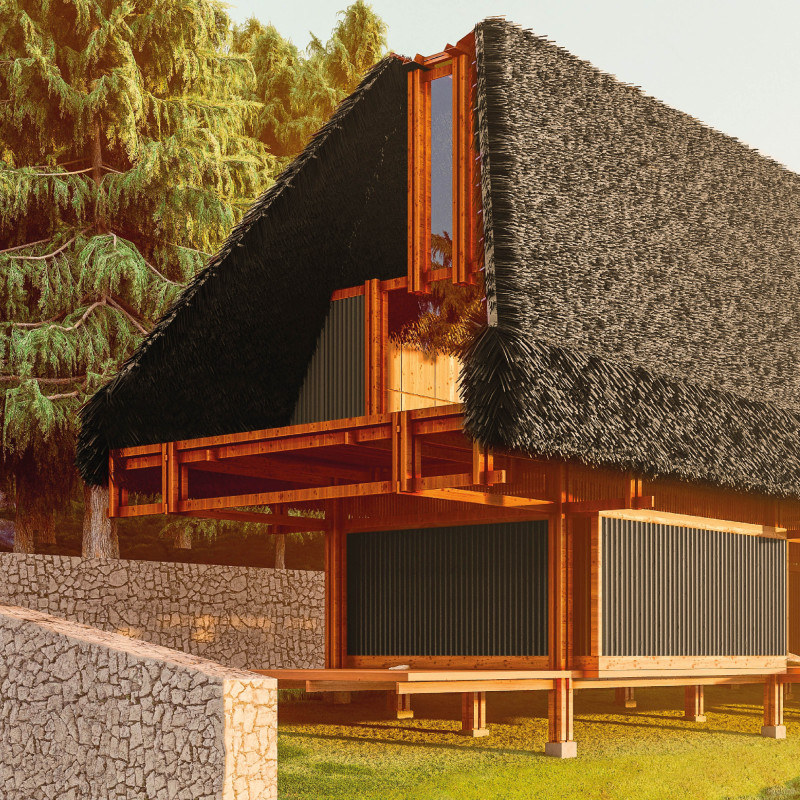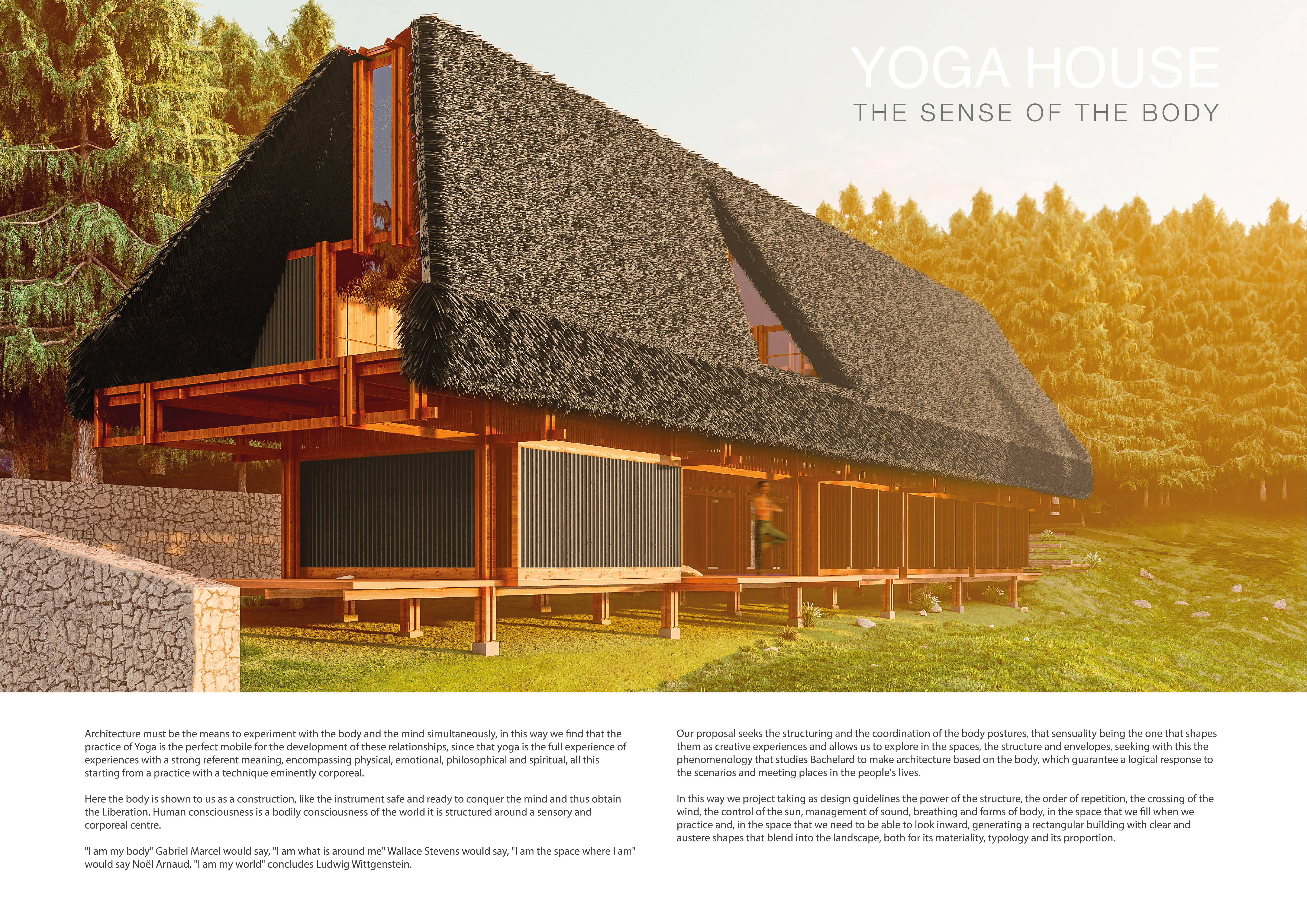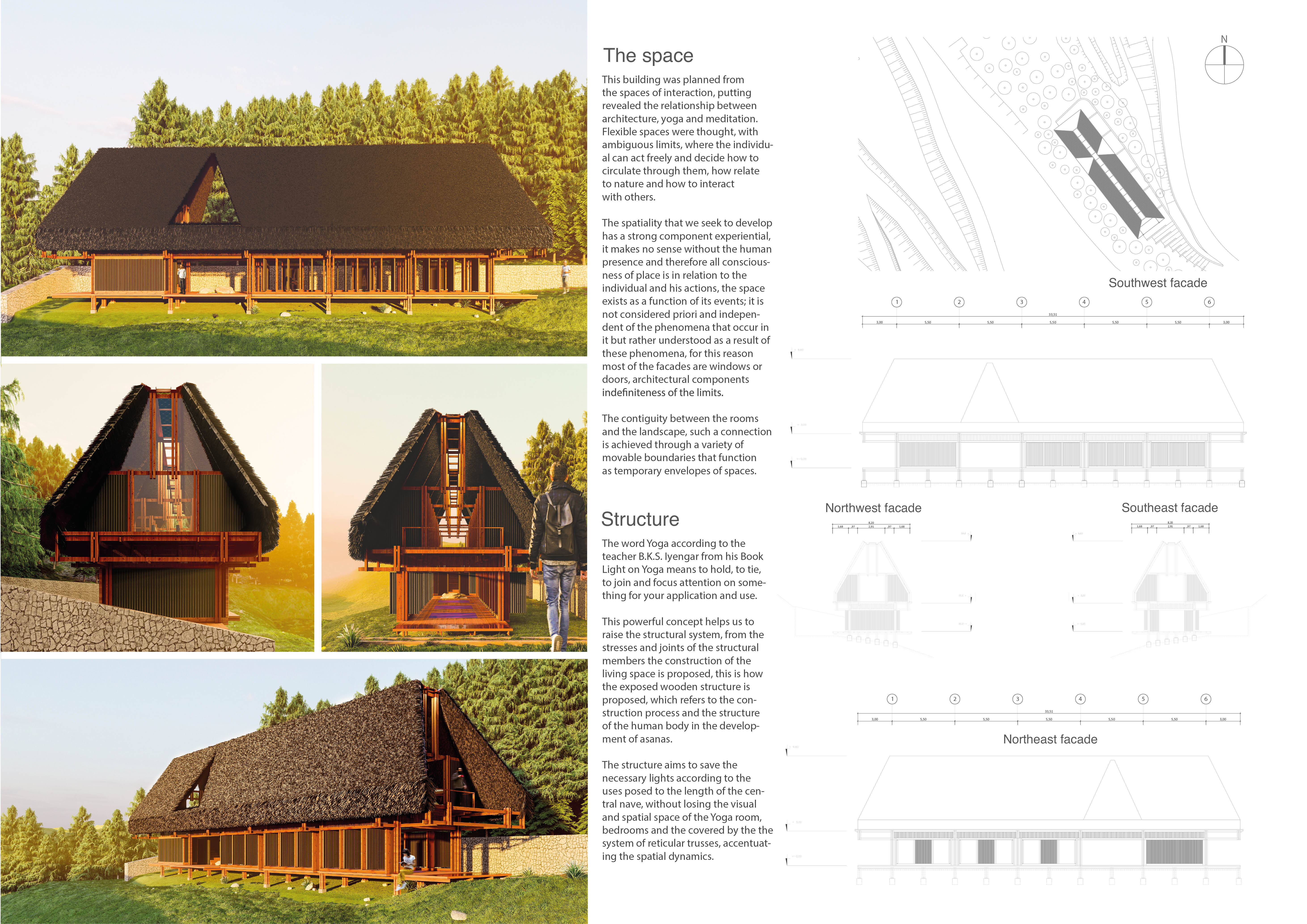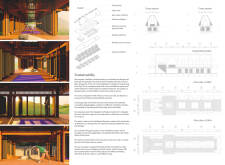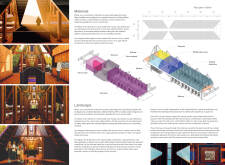5 key facts about this project
At its core, the Yoga House functions as a center for yoga practice, meditation, and communal gatherings. It provides a spacious yoga area that allows practitioners to engage in their activities in a bright, open environment, enriched by natural light and views of the surrounding landscape. This space serves not only for individual practice but also for group sessions, workshops, and retreats designed to cultivate personal growth and community connection. The presence of a zen courtyard at the center of the structure further enhances its functionality by offering an accessible outdoor retreat designed for informal gatherings or quiet contemplation, allowing users to enjoy the tranquility offered by the natural setting.
The architectural design of the Yoga House reflects a careful consideration of spatial organization, prioritizing both open and intimate spaces. This balance promotes a fluid interaction among users, encouraging movement and engagement. The design incorporates flexible areas that can adapt to a variety of activities, highlighting the understanding of how the space will be utilized by its occupants. This adaptability is underscored by an emphasis on connection with nature, as the building features expansive windows that invite the surrounding landscape inside while establishing a continuous dialogue between interior and exterior.
Significant attention has been given to the materiality of the Yoga House, with a palette that primarily includes sustainably sourced wood, straw, and energy-efficient technologies. The wooden framework not only provides structural integrity but also adds warmth and a sense of natural beauty, which enhances the overall aesthetics of the design. The strategic use of straw as insulation contributes to the building’s eco-friendly profile, ensuring a comfortable climate for its users while minimizing environmental impact. Furthermore, the integration of rainwater collection and solar panels showcases the project’s commitment to sustainability, promoting self-sufficiency and a reduced ecological footprint.
Among the unique design approaches evident in this project is its emphasis on harmonizing with the natural environment, achieved through a series of thoughtful architectural choices. The gently undulating roofline mirrors the contours of the nearby landscape, blending the structure into its surroundings rather than imposing upon them. This deliberate alignment with the natural elements fosters a sense of belonging and serenity, reinforcing the core philosophical principles of yoga.
Furthermore, the incorporation of cross-ventilation strategies and abundant natural lighting reduces reliance on artificial heating and cooling, making the building more efficient and comfortable year-round. This design aspect reflects an understanding of environmental cycles and a commitment to creating a welcoming atmosphere for users.
In summary, the Yoga House project serves as a meaningful embodiment of the principles underlying yoga practice by providing an architectural solution that facilitates personal and communal growth. It represents a thoughtful synthesis of form, function, and philosophy, establishing a space where architecture and mindfulness intersect. To gain deeper insights into the project, including architectural plans, sections, and designs, readers are encouraged to explore the project presentation further. This opportunity will enhance understanding of the innovative ideas that drive this architectural endeavor and its capacity to enrich lives through thoughtful design.


